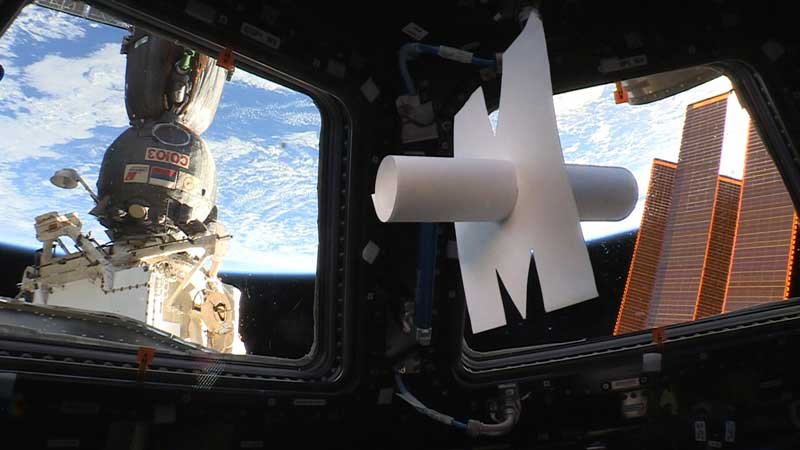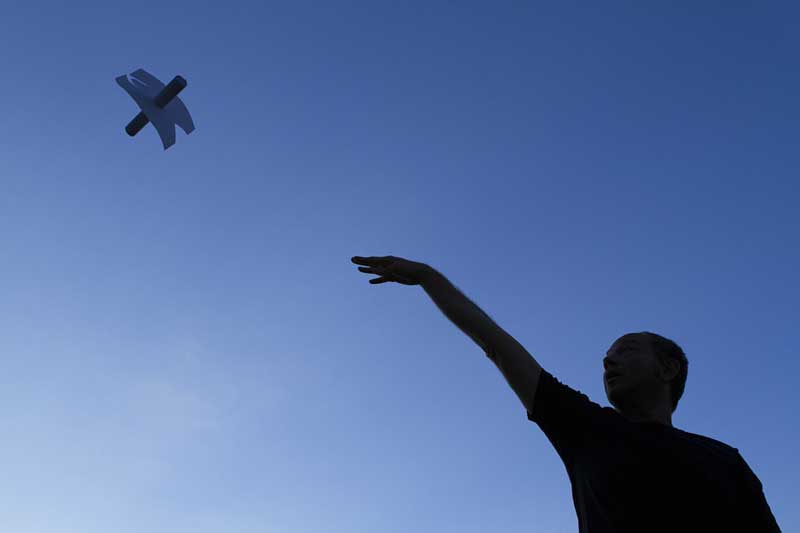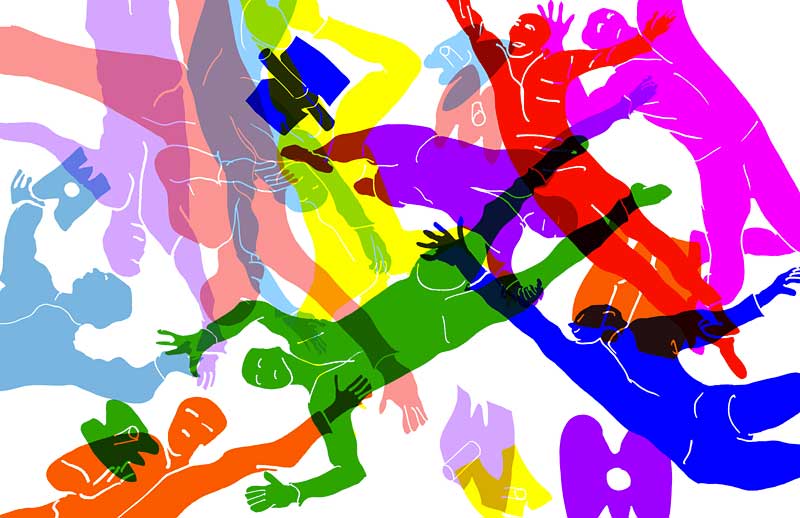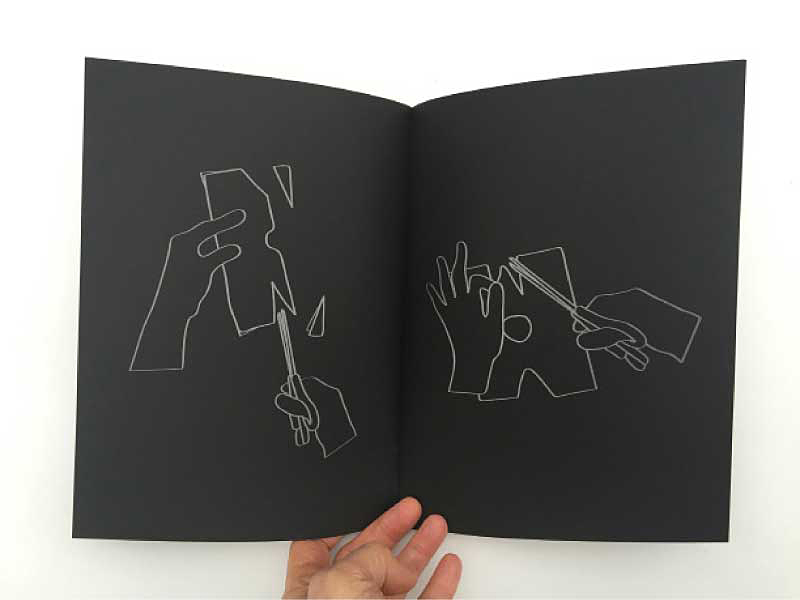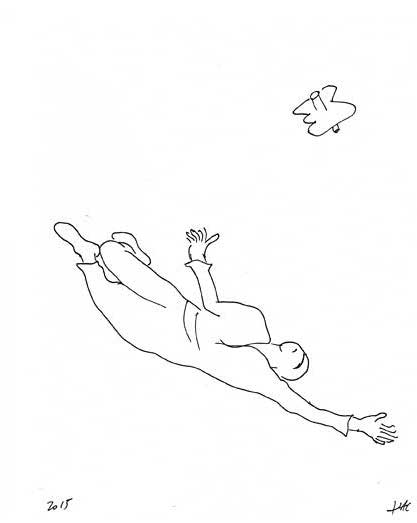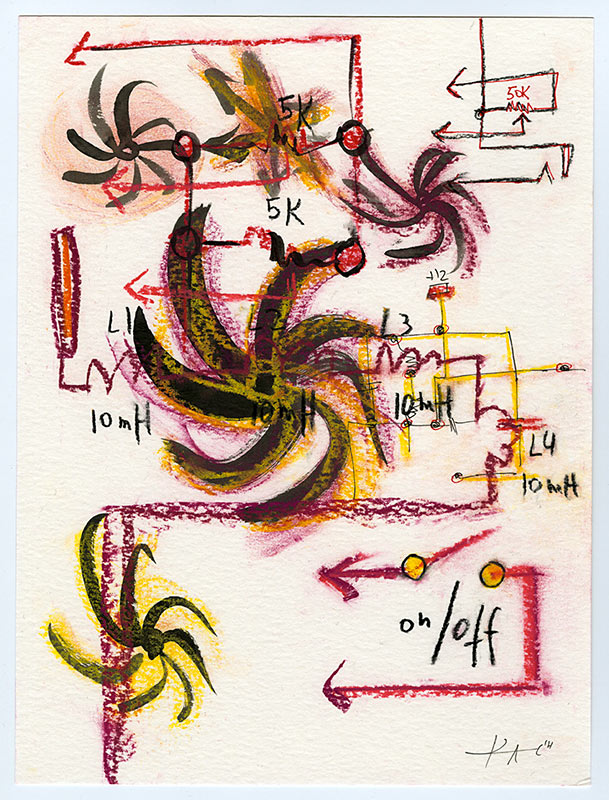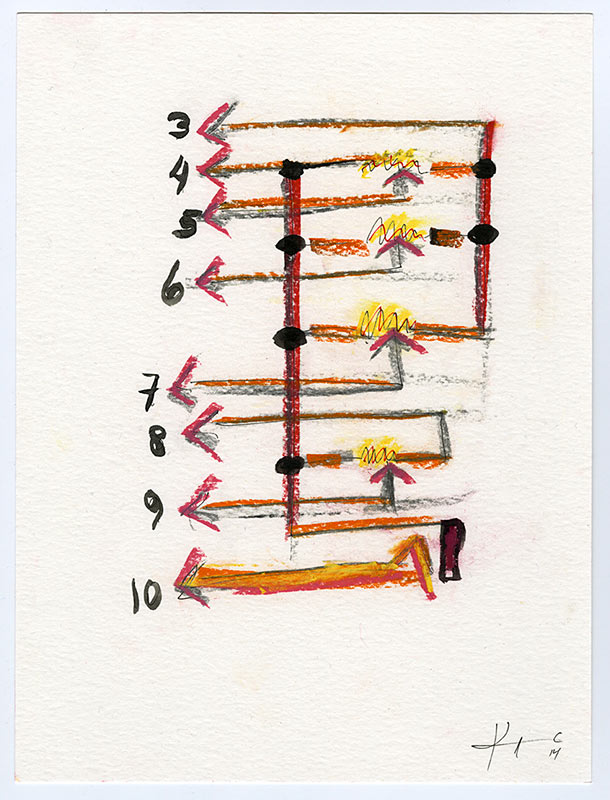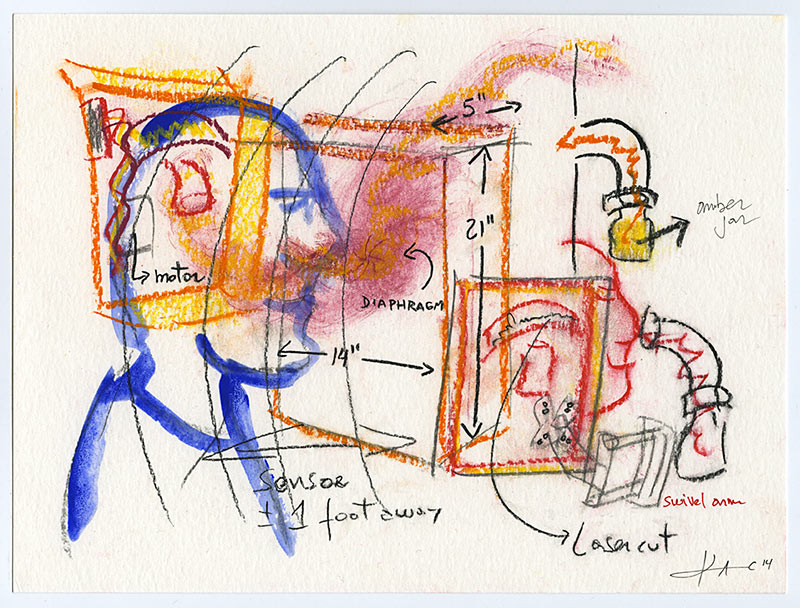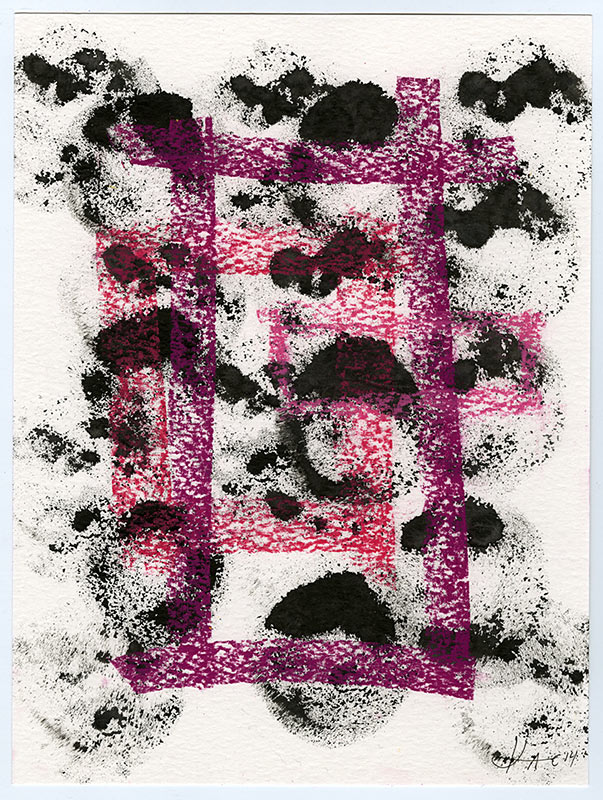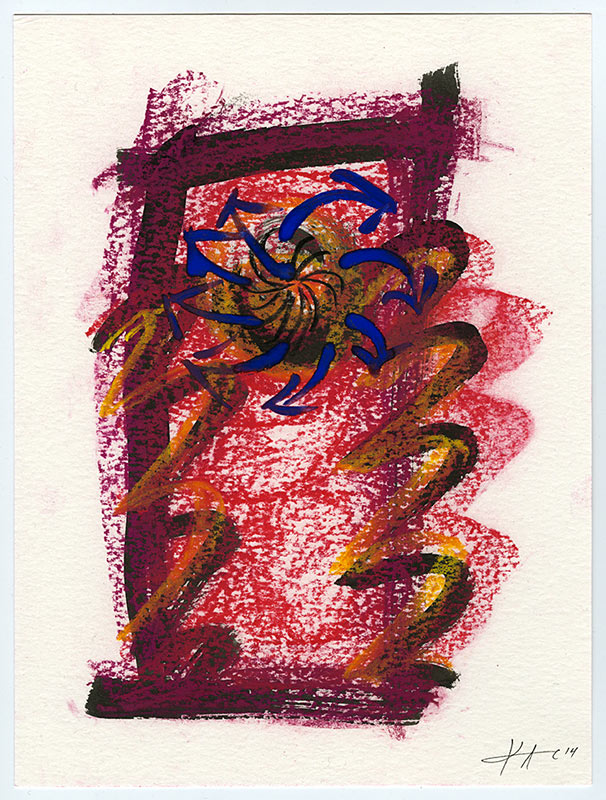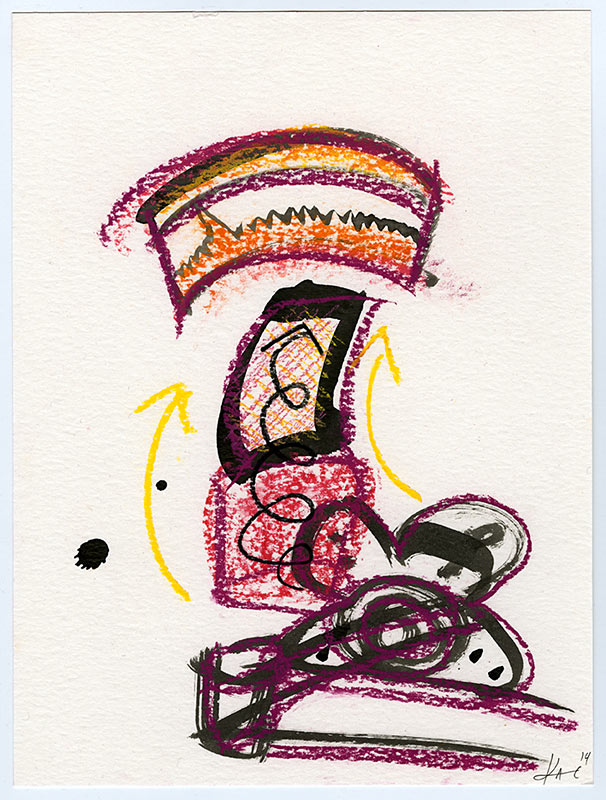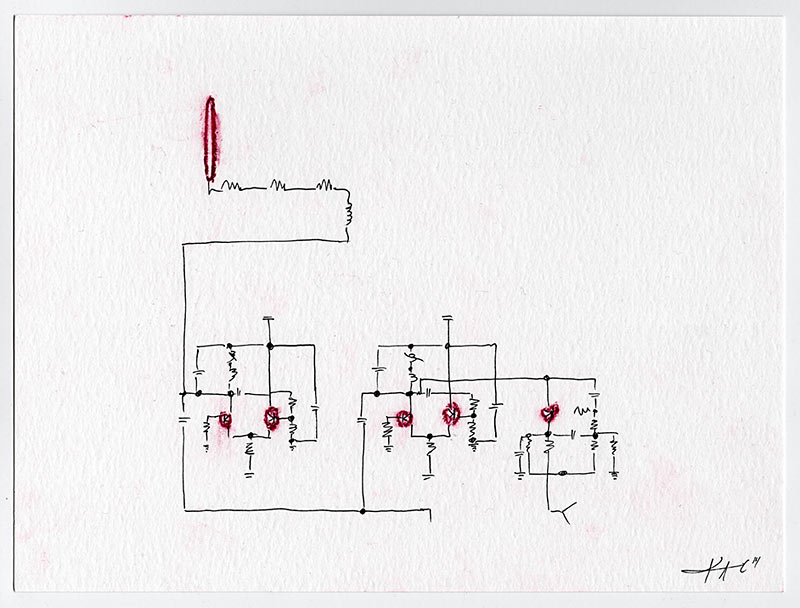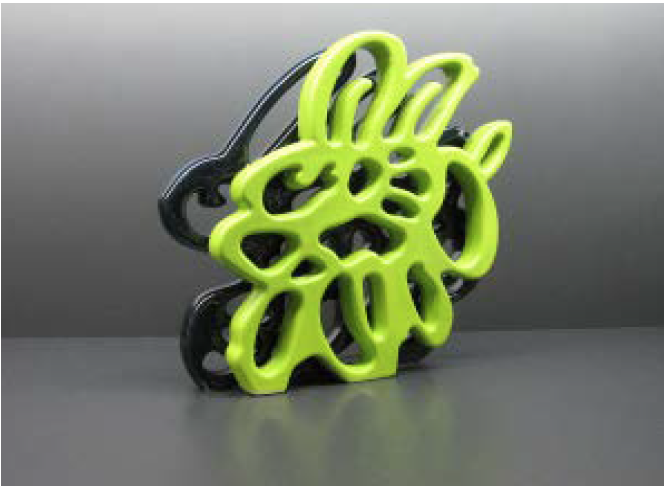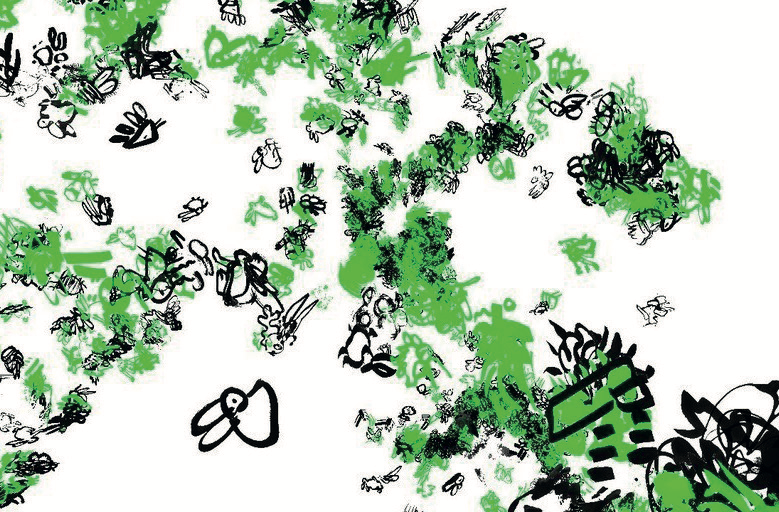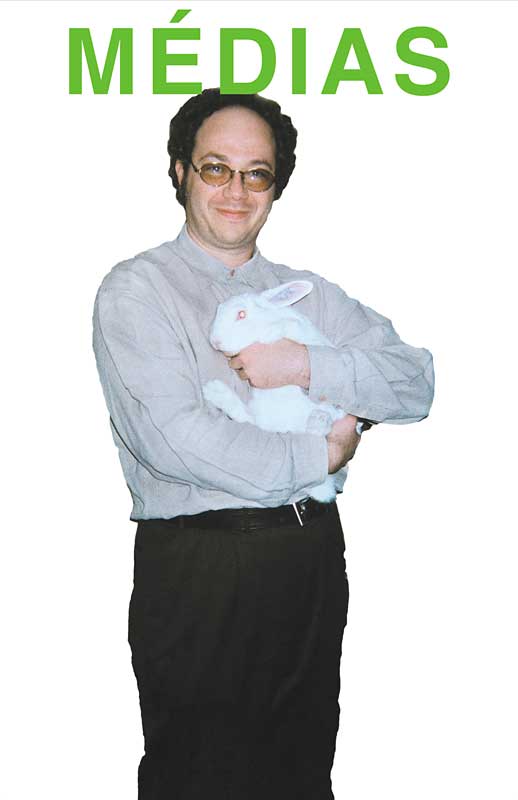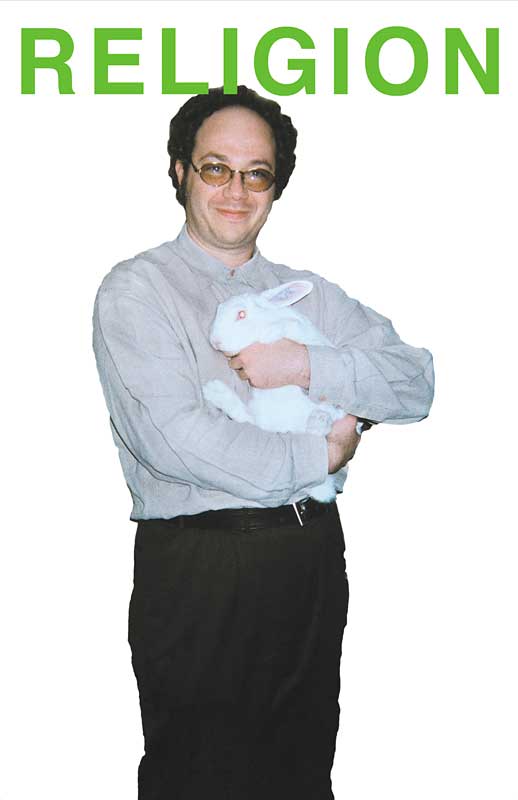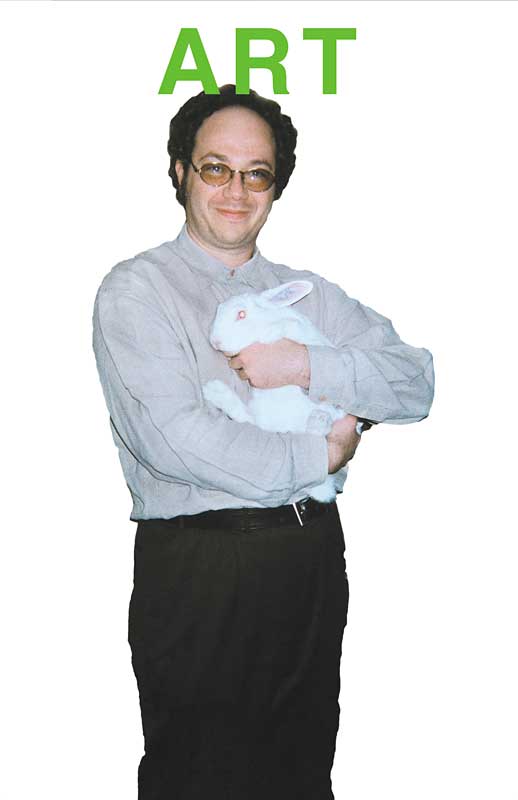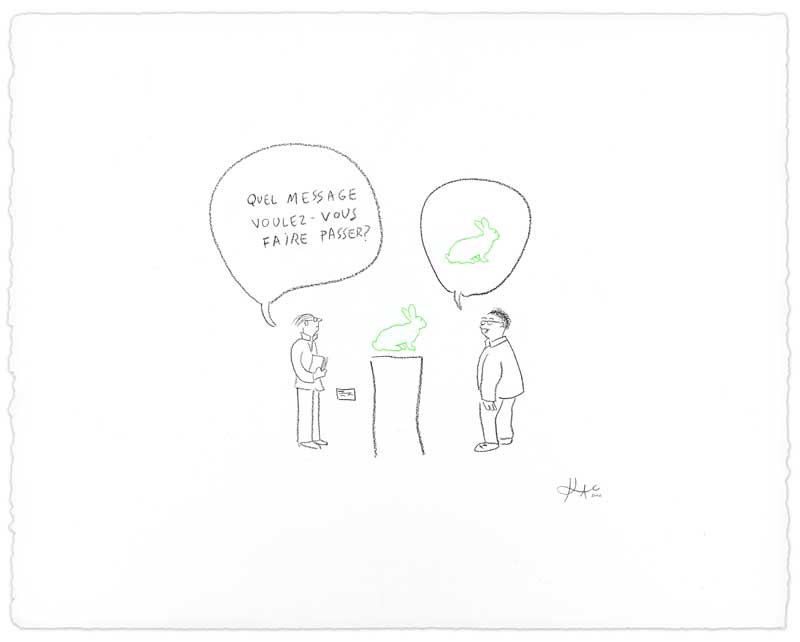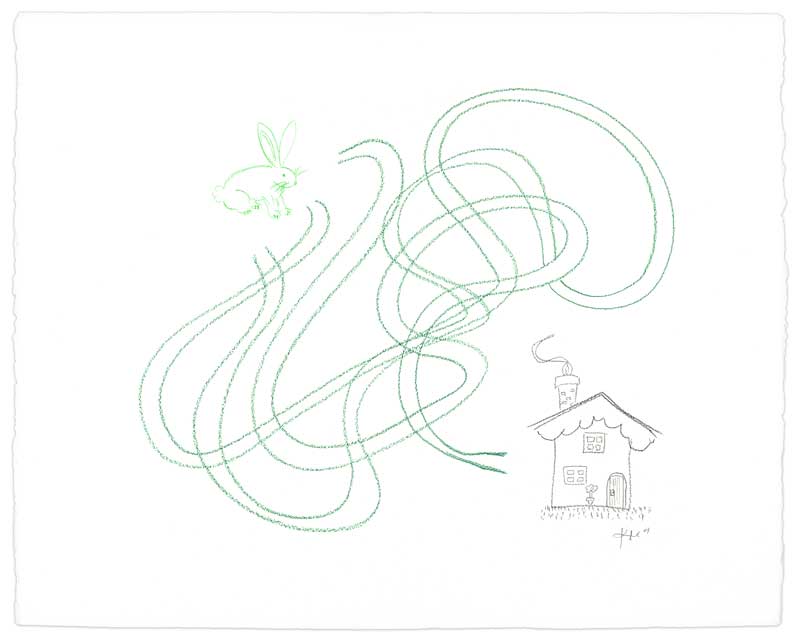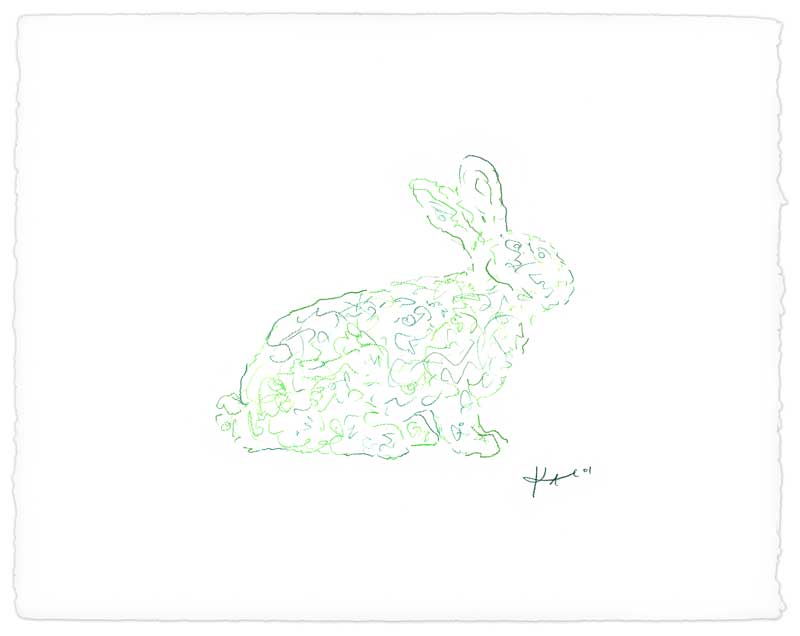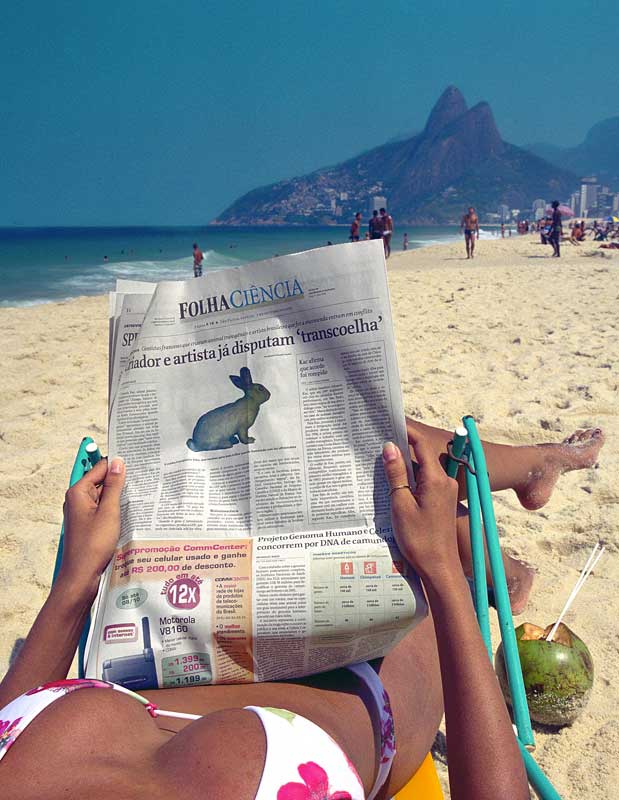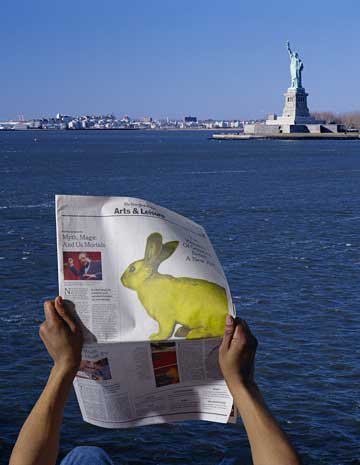Eduardo Kac
Eduardo Kac is internationally recognized for his interactive artworks using telepresence and his practice in BioArt. A pioneer of telecommunications art in the pre-Web '80s, Eduardo Kac (pronounced "Katz") emerged in the early '90s with his radical works combining telerobotics and living organisms. His visionary integration of robotics, biology and networking explores the fluidity of subject positions in the post-digital world.
At the dawn of the twenty-first century Kac opened a new direction for contemporary art with his "transgenic art"--first with a groundbreaking transgenic work entitled Genesis (1999), which included an "artist's gene" he invented, and then with his fluorescent rabbit called Alba (2000).
Kac’s work has been exhibited internationally at venues such as Exit Art and Ronald Feldman Fine Arts, New York; Maison Européenne de la Photographie, Paris; Castello di Rivoli, Turin, Italy; Mori Art Museum, Tokyo; Reina Sofia Museum, Madrid; Zendai Museum of Modern Art, Shanghai; and Seoul Museum of Art, Korea. Kac's work has been showcased in biennials such as Yokohama Triennial, Japan, Biennial of the End of the World, Ushuaia, Argentina, Gwangju Biennale, Korea, Bienal de Sao Paulo, Brazil, and International Triennial of New Media Art, National Art Museum of China, Beijing.
His work is part of the permanent collection of the MoMa, New York; Tate, London; Victoria & Albert Museum, London; the Metropolitan Museum of Art, New York; the Museum of Modern Art of Valencia, Spain; the ZKM Museum, Karlsruhe, Germany, and the Museum of Modern Art in Rio de Janeiro, among others.
Kac's work has been featured both in contemporary art publications (Flash Art, Artforum, ARTnews, Kunstforum, Tema Celeste, Artpress, NY Arts Magazine) and in the mass media (ABC, BBC, PBS, Le Monde, Boston Globe, Washington Post, Chicago Tribune, New York Times). Kac has received many awards, including the Golden Nica Award, the most prestigious award in the field of media arts and the highest prize awarded by Ars Electronica. He lectures and publishes worldwide. His work is documented on the Web in eight languages: http://www.ekac.org.
Kac is a member of the editorial board of the journal Leonardo, published by MIT Press. Kac's writings on art, which have appeared in several books and periodicals in many countries, have been collected in two volumes: Telepresence and Bio Art : Networking Humans, Rabbits and Robots (Ann Arbor: University of Michigan Press, 2005) and Luz & Letra (Rio de Janeiro: Contra Capa, 2004). Kac's poetry is collected in Hodibis Potax (Édition Action Poétique, Ivry-sur-Seine (France) and Kibla, Maribor (Slovenia), 2007). Books about Kac's work include: Eduardo Kac : Move 36, Elena Giulia Rossi, editor (Paris : Filigranes Éditions, 2005), The Eighth Day: The Transgenic Art of Eduardo Kac, Sheilah Britton and Dan Collins, eds. (Tempe: ISA/ASU -- New York: DAP, 2003) and Eduardo Kac (Valencia: IVAM, 2007).
From his first experiments online in 1985 to his current convergence of the digital and the biological, Kac has always investigated the philosophical and political dimensions of communication processes. Equally concerned with the aesthetic and the social aspects of verbal and non-verbal interaction, in his work Kac examines linguistic systems, dialogic exchanges, and interspecies communication. Kac's pieces, which often link virtual and physical spaces, propose alternative ways of understanding the role of communication phenomena in creating shared realities.
Exhibitions
Past- + Eduardo Kac Feeling of Smell - November '14
- + Archeonauts - May '17
- + Eduardo Kac Inner Telescope - July '17
- + Eduardo Kac Inner Telescope - May '18
- + Eduardo Kac GFP Bunny - March '19
- + Galerie Charlot 10-Year Anniversary Exhibition - September '20
- + Digital Art Waves - September '22
- + Digit-All - October '23
- + My1st collection - December '24
Fairs
- + 04/28/2022 | Art Brussels 2022 | Manfred Mohr, Sabrina Ratté and Quayola
- + 04/07/2022 | Expo Chicago 2022 | Eduardo Kac solo show
News
- + 11/29/2025 | Eduardo Kac - "Antagonistas: resistências algoritmicas"
- + 10/17/2025 | Eduardo Kac - "La Vie de l’Espace"
- + 10/16/2025 | Antoine Schmitt, Anne-Sarah Le Meur, and Eduardo Kac Featured in "Cinétique Quantique"
- + 10/08/2025 | Eduardo Kac - "Paisagem em suspensão”
- + 10/02/2025 | Eduardo Kac - "Hello World!"
- + 09/17/2025 | Eduardo Kac - ENCODER L'ESPACE
- + 09/06/2025 | Eduardo Kac - "Outsider Bodies"
- + 05/20/2025 | Eduardo Kac - "Fullgás – artes visuais e anos 1980 no Brasil" at Centro Cultural Banco do Brasil in São Paulo
- + 04/26/2025 | Eduardo Kac - "Living People, Shining, Stars in the Night" exhibition at ISLAA New York
- + 04/16/2025 | Eduardo Kac - Talk and screening at
RWTH Aachen University in Aachen, Germany
- + 04/05/2025 | Eduardo Kac - What's your type? Art-poetry-music in typing & computing, London
- + 03/16/2025 | Eduardo Kac - "Unter Pflanzen" exhibition at the Sinclair-Haus Museum in Bad Homburg, Germany
- + 03/13/2025 | Eduardo Kac - "Cosmic Horizons", the exhibition at La Fabrique, University Jean Jaurès of Toulouse
- + 03/05/2025 | Eduardo Kac at the ARCO Madrid 2025 fair, with Faria Fine Art
- + 11/28/2024 | Manfred Mohr and Eduardo Kac at TATE MODERN
- + 11/11/2024 | Eduardo KAC at New Art Foundation, Reus, Spain
- + 10/02/2024 | Eduardo Kac at Centro Cultural Banco do Brasil
- + 09/18/2024 | Encoder l'espace. Eduardo Kac, Centre des arts, Enghien-les-Bains
- + 07/03/2024 | EDUARDO KAC. „Shining LAGOGLYPHS”
- + 09/05/2023 | Eduardo Kac : "Ágora or the first the first work of art to
orbit in deep space.
- + 09/01/2022 | Launch of the NFT platform of the Galerie Charlot -
Opening on September 1st
- + 07/05/2022 | "NFT – One Of A Kind” @Tel Aviv Museum of art
- + 04/28/2022 | Galerie Charlot @ Art Brussels
- + 04/28/2022 | Eduardo Kac Solo Show @ Henrique Faria Fine Art NYC
- + 04/23/2022 | Eduardo Kac @ Venice Biennale
- + 04/07/2022 | Galerie Charlot @ Expo Chicago
- + 03/18/2022 | Eduardo Kac @ l’Observatoire de l’Espace du CNES
- + 02/23/2022 | Eduardo Kac @ Centre Pompidou
- + 02/15/2022 | Eduardo Kac @ MoMA
- + 11/24/2021 | Eduardo Kac @ Galerie Plateforme
- + 11/18/2020 | Eduardo Kac - Lecture @ MoMA
- + 09/09/2020 | Galerie Charlot @ Ars Electronica - In Kepler Gardens
- + 03/01/2020 | Exhibition The Museum of Contemporary Art in the 21st Century - Eduardo Kac @ Museum of Contemporary Art, Sao Paulo
- + 01/11/2020 | Exhibition Art in Motion. 100 Masterpieces with and through Media - Eduardo Kac @ CAFA Art Museum, Beijing
- + 10/09/2019 | Eduardo Kac exhibits at the ULB
- + 09/19/2019 | Eduardo Kac @ Centre Pompidou, Paris
- + 02/20/2019 | Eduardo Kac et Laurent Mignonneau&Christa Sommerer @ Centre Pompidou
- + 02/01/2019 | MoMA has acquired a work from the Minitels series by Eduardo Kac
- + 01/22/2019 | Eduardo Kac @ New Museum, NY
- + 10/30/2018 | The Tate Modern Museum acquired Eduardo Kac's 4 Minitels series
- + 10/27/2018 | Eduardo Kac in the exhibition "Mechanical Echos: the typewriter and artistic practice" at the MAC in Sao Paulo
- + 10/26/2018 | Eduardo Kac will be present for the launch event of Telepresence, Bio Art & Poetry, a Video Data Bank box-set at the Sector 2337 gallery, Chicago
- + 10/23/2018 | Eduardo Kac, Laurent Mignonneau & Christa Sommerer @ City University, Hong Kong
- + 10/20/2018 | Participation of Eduardo Kac in the collective exhibition "2018: the year of first contact" at the Abattoirs Museum in Toulouse
- + 10/20/2018 | Antoine Schmitt & Eduardo Kac @ Open Codes - ZKM Museum, Karlsruhe, Germany
- + 09/25/2018 | Eduardo Kac at the Victoria & Albert Museum for a talk
- + 09/22/2018 | Eduardo Kac exhibits works at the Kunsthalle in Emden, Germany
- + 09/21/2018 | Participation of Eduardo Kac in the Ellos y nosotros exhibition at the Museum of Modern and Contemporary Art in Palma de Mallorca, Spain
- + 09/07/2018 | Solo exhibition of Eduardo Kac at the gallery Sector 2337 in Chicago
- + 08/29/2018 | Eduardo Kac participates in the collective exhibition Arte-veículo at the Sesc Pompeia in Sao Paulo
- + 07/14/2018 | Manfred Mohr, Eduardo Kac and Laurent Mignonneau & Christa Sommerer's in "Art in Motion", ZKM Karlsruhe
- + 06/30/2018 | Manfred Mohr, Eduardo Kac, Christa Sommerer & Laurent Mignonneau @BIAN International Digital Art Biennial
- + 06/29/2018 | Eduardo Kac exhibits Inner Telescope at BIAN (International Digital Art Biennia) in Montreal
- + 06/14/2018 | Eduardo Kac exhibits Télescope Intérieur at the Centre des Arts of Enghien les Bains
- + 06/07/2018 | Participation of Eduardo Kac in a meeting at the Abattoirs in Toulouse, about his work Télescope Intérieur
- + 06/04/2018 | Eduardo Kac at Cambridge, UK, for a talk
- + 06/02/2018 | "… and the bunny goes POP!", exhibition of Eduardo Kac at The Horse Hospital, London.
- + 04/07/2018 | Poetry for Animals, Machines and Aliens: The Art of Eduardo Kac
- + 01/27/2018 | Télescope intérieur, "a space work by Eduardo Kac" at Louvre
- + 11/08/2017 | ELECTRONIC SUPERHIGHWAY (1966-2016) - MAAT, Lisbon, Portugal
- + 11/07/2017 | Eduardo Kac at the BIENALSUR, Buenos Aires, Argentina
- + 10/20/2017 | Eduardo Kac at ZKM, Karlsruhe, Germany
- + 10/01/2017 | Eduardo Kac at the Museu de Arte de Sao Paulo, Brazil
- + 09/01/2017 | Eduardo Kac at The Seoul Art Space Geumcheon
- + 09/01/2017 | Eduardo Kac- Getty Foundation
- + 08/11/2017 | Eduardo Kac at Thoma Foundation, Santa Fe
- + 03/23/2017 | Eduardo Kac @ Festival Sideration, Paris
- + 03/08/2017 | Eduardo Kac - Zaven Paré - Thomas Israël @ "Golem ! Avatar d'une légende d'argile", Musée d'art et d'histoire du Judaïsme, Paris
- + 11/01/2016 | "Reabracadabra" by Eduardo Kac @ online exhibition "Net Art Anthology II" by Rhizome
- + 10/27/2016 | Eduardo Kac @ "Electronic Timing - Beep Electronic Art Collection"
- + 09/14/2016 | Eduardo Kac : From the Pink Miniskirt to the Green Bunny. La Plaque Tournante, Berlin.
- + 04/29/2016 | Eduardo Kac's Edunia prints @The Human Option. Bodies | Spheres | Apparatuses, Zeppelin Museum, Friedrichshafen
- + 01/29/2016 | Eduardo Kac & Manfred Mohr @ Electronic Superhighway, Whitechapel Gallery, London
- + 07/22/2015 | 6PM Your Local Time / Browsing Browsing / Jul 22 /
Curated by Anne Roquigny & Valentina Peri
- + 10/21/2014 | Galerie Charlot @ Slick Attitude Paris, 22-26 October 2014
Editions
- + Archéonautes
40 color pages booklet, ISBN 978-2-9541000-5-0
- Galerie Charlot Èdition - + Eduardo Kac-Porneia
- Galerie Charlot Èdition
Press
- + 11/11/2024 | Reus se positionne sur la carte mondiale de l'art technologique.
by Esteve Giralt, LA VANGUARDIA
> https://www.lavanguardia.com/encatala/20...
_ reus-se-positionne-s...pdf ( PDF, 330.08 KB ) - + 09/01/2023 | Exposition Digit-All
by Lucie Guillet, Fisheye Immersive
> https://fisheyeimmersive.com/evenement/d... - + 08/10/2023 | Digit-All, une célébration de l’art digital sous toutes ses formes
by Manon Schaefle, Fisheye Immersive
> https://fisheyeimmersive.com/article/dig... - + 09/20/2022 | Le space art d'Eduardo Kac
by Jacques Donguy
_ le-space-art-deduard...pdf ( PDF, 2.56 MB ) - + 05/24/2022 | Eduardo Kac – interview: ‘There is nothing on paper. All the works are experienced dynamically, with the glowing quality of functional displays’
by Brona? Ferran, Studio International
> https://www.studiointernational.com/inde...
_ eduardo-kac--intervi...pdf ( PDF, 1.35 MB ) - + 05/04/2022 | EXPANDING FORMATS: NFTS AT ART BRUSSELS
by Pau Waelder, Niio
> https://www.niio.com/blog/expanding-form... - + 04/25/2022 | Art Brussels 2022 Partners With Parallel on NFT Programme
by Michael Irwin, Ocula
> https://ocula.com/magazine/art-news/art-...
_ art-brussels-2022-pa...pdf ( PDF, 2 MB ) - + 04/18/2022 | The Venice Biennale Power List: Here Is Every Gallery Representing an Artist at the 59th Edition of the Venice Biennale
by Naomi Rea, Artnet News
> https://news.artnet.com/news-pro/venice-... - + 04/10/2022 | Expo Chicago : une foire en quête d’internationalisation
by Alison Moss, Le Quotidien de l'Art
> https://www.lequotidiendelart.com/articl...
_ expo-chicago--une-fo...pdf ( PDF, 1.1 MB ) - + 03/16/2022 | Les NFT s'installent dans les ventes aux enchères
by Clémentine Pomeau-Peyre, Idéal Investisseur
> https://www.ideal-investisseur.fr/tendan...
_ les-nft-sinstallent-...pdf ( PDF, 546.37 KB ) - + 02/16/2022 | Une nouvelle vente aux enchères d'œuvres NFT propose… même une cathédrale sur Mars !
La Razon
> https://www.larazon.es/lujo/20220216/m3v...
_ une-nouvelle-vente-a...pdf ( PDF, 1.49 MB ) - + 02/11/2022 | NFT : Aguttes crée une vente d'art dans le métavers
by Peggy Baron, L'ADN
> https://business.ladn.eu/news-business/a...
_ nft--aguttes-cree-un...pdf ( PDF, 258.84 KB ) - + 02/11/2022 | Metaverse : une première vente aux enchères dans un monde virtuel
by Caroline Courvoisier, Idéal Investisseur
> https://www.ideal-investisseur.fr/tendan...
_ metaverse--une-premi...pdf ( PDF, 458.6 KB ) - + 02/09/2022 | EXPO CHICAGO announces participating exhibitors for ninth edition
The WIndy City Times
> www.windycitytimes.com/lgbt/EXPO-...
_ -expo-chicago-announ...pdf ( PDF, 529.76 KB ) - + 02/09/2022 | Here’s the Exhibitor List for Expo Chicago 2022
by Maximiliano Duron, ArtNews
> https://www.artnews.com/art-news/market/...
_ heres-the-exhibitor-...pdf ( PDF, 1.69 MB ) - + 02/05/2022 | Unpublished auction of NFT works will offer from a Hokusai to a cathedral on Mars
by Michael Moore, Robots & Us
> https://robotsandus.org/unpublished-auct...
_ unpublished-auction-...pdf ( PDF, 743.09 KB ) - + 02/05/2022 | Des œuvres d'art visuelles et sonores vont être proposées dans cette vente qui aura lieu à la fois dans le métavers et en réel.
by 6medias, Capital
> https://www.capital.fr/economie-politiqu...
_ des-oeuvres-dart-vis...pdf ( PDF, 428.95 KB ) - + 02/05/2022 | Une vente aux enchères inédite d'œuvres NFT offrira d'un Hokusai à une cathédrale sur Mars
by AFP, El Financiero
> https://www.elfinancierocr.com/cables/su... - + 02/05/2022 | NFT META ARTFAIR x THE UNVIRTUAL SALE
Aguttes
> https://www.aguttes.com/actualite/83937?...
_ nft-meta-artfair-x-t...pdf ( PDF, 601.09 KB ) - + 02/04/2022 | La première foire d’art NFT à Paris du 5 au 8 février 2022 sera clôturée par une vente aux enchères
Croissance Investissement
> croissanceinvestissement.com/la-p...
_ la-premiere-foire-da...pdf ( PDF, 2.07 MB ) - + 02/03/2022 | Unvirtual Paris, vente aux enchères dédiée aux NFT
by La Rédaction, Services Mobiles
> https://www.servicesmobiles.fr/unvirtual...
_ unvirtual-paris-vent...pdf ( PDF, 991.69 KB ) - + 01/11/2022 | une Première : une foire d’art métavers
by Almanart
> https://www.almanart.org/les-metavers-so...
_ une-premiere--une-fo...png ( PNG, 1.13 MB ) - + 12/24/2021 | Foires : Unvirtual NFT Meta Artfair arrive
by Nicolas Maggi, Collezione da Tiffany
> https://collezionedatiffany.com/preview-...
_ foires--unvirtual-nf...pdf ( PDF, 483.5 KB ) - + 11/30/2021 | TÉLESCOPE INTÉRIEUR
by Dominique Moulon, TK-21
> https://www.tk-21.com/Telescope-interieu... - + 10/01/2021 | Leonardo im Labor – Kunst & Wissenschaft im21. Jahrhundert
by Sabine B. Vogel, Kunstforum International
_ leonardo-im-labor--k...pdf ( PDF, 2.8 MB ) - + 10/01/2021 | Spurkunst - LUTZ HENGST,
KUNST- UND KULTURWISSENSCHAFTLER im Gespräch mit Sabine B. Vogel
by Lutz Hengst, Kunstforum International
_ spurkunst-lutz-hengs...pdf ( PDF, 1.09 MB ) - + 10/01/2021 | Künstliche Lebendigkeit -MOTIVE, METAPHERN, MEDIEN UND MISSVERSTÄNDNISSE
by Jens Hauser, Kunstforum International
_ kunstliche-lebendigk...pdf ( PDF, 458.1 KB ) - + 02/15/2019 | Eduardo Kac
Wall Street International
> https://wsimag.com/art/51463-eduardo-kac
_ eduardo-kac-galeriec...pdf ( PDF, 720.77 KB ) - + 01/23/2019 | The Art of the Internet, Restored and Out in the World
by Sophie Haigney, New York Times
> https://www.nytimes.com/2019/01/23/arts/...
_ the-art-of-the-inter...pdf ( PDF, 185.67 KB ) - + 01/11/2019 | Space Tracks
by Arte, Arte
> https://www.arte.tv/fr/videos/078739-014... - + 11/30/2017 | La Galerie Charlot à Tel Aviv
by Rachel Samoul, Kef Israël
> kefisrael.com/2017/11/30/la-galer...
_ la-galerie-charlot-a...pdf ( PDF, 988.48 KB ) - + 11/21/2017 | 'Archeonauts’ Traverses Timelines with an Acute Archeological Gaze at Galerie Charlot, Tel Aviv
headlines24
> www.headlines24.nl/nieuwsartikel/...
_ archeonauts-traverse...pdf ( PDF, 301.78 KB ) - + 11/21/2017 | 'Archeonauts’ Traverses Timelines with an Acute Archeological Gaze at Galerie Charlot, Tel Aviv
Blouin Artinfo
> enme.blouinartinfo.com/news/story...
_ archeonauts-traverse...pdf ( PDF, 201.71 KB ) - + 11/02/2017 | Archeonauts
MutualArt
> https://www.mutualart.com/Exhibition/Arc...
_ archeonauts-galeriec...pdf ( PDF, 508.44 KB ) - + 07/16/2017 | Vous reprendrez bien un peu de voie lactée
by Marie Kock, Stylist
_ vous-reprendrez-bien...pdf ( PDF, 2.38 MB ) - + 06/17/2017 | Eduardo Kac permet la première création d’une œuvre dans l’espace
by Sandra Barré, Untitled Mag
> untitledmag.fr/eduardo-kac-permet...
_ eduardo-kac-permet-l...pdf ( PDF, 2.88 MB ) - + 06/08/2017 | From Dream to Pieces
by Pierre Berger, Diccan
> diccan.com/Blog2/Kac_Inner_Telesc...
_ from-dream-to-pieces...pdf ( PDF, 1.23 MB ) - + 05/27/2017 | Archeonautes on Wall Street International
Wall Street International
> wsimag.com/art/26558-archeonautes
_ archeonautes-on-wall...pdf ( PDF, 579.52 KB ) - + 05/26/2017 | La quête de sens des Archéonautes
by Marie-Laure Desjardins, Arts Hebdo
> artshebdomedias.com/article/quete...
_ la-quete-de-sens-des...pdf ( PDF, 340.72 KB ) - + 05/16/2017 | Post-Internet Artists Crack Open Our Technological Past
by Joseph Nechvatal, Hyperallergic
> https://hyperallergic.com/379345/post-in...
_ post-internet-artist...pdf ( PDF, 2.51 MB ) - + 05/09/2017 | Thomas Pesquet raconte l'oeuvre d'Eduardo Kac à Karl Lagerfeld.
France Info
> www.francetvinfo.fr/sciences/espa... - + 05/01/2017 | Eduardo Kac – Télescope intérieur
by Thierry Voisin, Télérama
> sortir.telerama.fr/evenements/spe...
_ eduardo-kac--telesco...pdf ( PDF, 249.44 KB ) - + 04/15/2017 | Eduardo Kac : Thomas Pesquet sera l'acteur de la première performance artistique réalisée dans l'espace
CNES Observatoire
> www.cnes-observatoire.net/actuali...
_ eduardo-kac--thomas-...pdf ( PDF, 462.58 KB ) - + 04/13/2017 | 'Archeonauts' at Galerie Charlot, Paris
by Blouin Artinfo, Blouin Artinfo
> www.blouinartinfo.com/news/story/...
_ archeonauts-at-galer...pdf ( PDF, 706 KB ) - + 03/24/2017 | L'expérience de l'avenir avec Eduardo Kac
by Samantha Deman, Arts Hebdo
> artshebdomedias.com/article/lexpe...
_ lexperience-de-laven...pdf ( PDF, 186.61 KB ) - + 03/23/2017 | A Space Odyssey : Making Art Up There
by Frank Rose, New York Times
> https://www.nytimes.com/2017/03/23/arts/...
_ a-space-odyssey--mak...pdf ( PDF, 334.64 KB ) - + 02/18/2017 | Eduardo Kac : Thomas Pesquet fait un grand pas pour l'art dans l'espace.
by Christine Siméone, France Inter
> https://www.franceinter.fr/culture/quand...
_ eduardo-kac--thomas-...pdf ( PDF, 392.28 KB ) - + 02/01/2017 | De l'art dans l'espace
by Anne-Cécile Sanchez, L'Oeil
_ de-lart-dans-lespace...pdf ( PDF, 1.05 MB ) - + 11/18/2016 | Un grand pas pour l'art
by Claire Bommelaer, Le Figaro
_ un-grand-pas-pour-la...pdf ( PDF, 1.98 MB ) - + 09/01/2016 | Station spatiale internationale - un artiste dans l'espace
by Françoise-Aline Blain, Beaux-Arts magazine
_ station-spatiale-int...pdf ( PDF, 2.58 MB ) - + 08/31/2016 | L'astronaute français Thomas Pesquet, un héros presque comme tout le monde
by Nicolas Delesalle, Télérama.fr
> www.telerama.fr/monde/l-astronaut...
_ lastronaute-francais...pdf ( PDF, 1.74 MB ) - + 07/29/2016 | L'astronaute de Rouen, Thomas Pesquet, réalisera une performance artistique dans l'espace
by La Rédaction, Actu.fr
> bit.ly/2kd3DUC
_ lastronaute-de-rouen...pdf ( PDF, 379.81 KB ) - + 07/22/2016 | Eduardo Kac : Exercice de "poésie spatiale" pour l'astronaute Thomas Pesquet
Le Point
> www.lepoint.fr/astronomie/exercic...
_ eduardo-kac--exercic...pdf ( PDF, 118.67 KB ) - + 10/01/2015 | Quand des artistes étalent leur science
by Daphné Bétard, Beaux-arts magazine
_ quand-des-artistes-e...pdf ( PDF, 2.76 MB ) - + 03/25/2015 | Eduardo Kac
by Samantha Deman , Hors série Arts Hebdo Medias
_ eduardo-kac-galeriec...pdf ( PDF, 1.04 MB ) - + 01/13/2015 | Eduardo Kac : Esquisse d'un art olfactif
by Denise Boullieu, Grain de musque
> graindemusc.blogspot.fr/2015/01/e...
_ eduardo-kac--esquiss...pdf ( PDF, 1.74 MB ) - + 01/03/2015 | Aromapoetry – a book to be read with the nose
by Franziska, inimitablee.wordpress.com
> https://inimitablee.wordpress.com/2015/0...
_ aromapoetry--a-book-...pdf ( PDF, 235.3 KB ) - + 11/19/2014 | Eduardo Kac. Feeling of Smell
by Elena Giulia Rossi, Arshake
> www.arshake.com/en/eduardo-kac-fe...
_ eduardo-kac-feeling-...pdf ( PDF, 393.34 KB ) - + 11/14/2014 | Eduardo Kac : Feeling of Smell
by Thierry Voisin, sortir.telerama.fr
> sortir.telerama.fr/evenements/exp...
_ eduardo-kac--feeling...pdf ( PDF, 189.21 KB ) - + 11/06/2014 | Lettres parfumées
by Thierry Voisin, Télérama sortir
> sortir.telerama.fr/evenements/exp...
_ lettre-parfumees-gal...pdf ( PDF, 1.31 MB ) - + 11/04/2014 | The olfactory art of Eduardo Kac
by Eduardo Kac, Vida Fundacion telefonica
> vida.fundaciontelefonica.com/en/2...
_ the-olfactory-art-of...png ( PNG, 377.76 KB ) - + 10/24/2014 | Les foires parisiennes et le numérique
L’expérience au rendez-vous
by Veronique Godé, Arts Hebdo Médias
> www.artshebdomedias.com/article/2...
_ les-foires-parisienn...pdf ( PDF, 161.95 KB ) - + 10/22/2014 | La Slick, Attitude resserrée
by Amelie Blaustein Niddam, Toute la culture
> toutelaculture.com/arts/marche-ar...
_ la-slick-attitude-re...pdf ( PDF, 599.76 KB ) - + 10/22/2014 | Eduardo Kac presents "Osmoboxes" at Galerie Charlot In Paris
by Creative Capital, Creative Capital
> creative-capital.org/events/view/...
_ eduardo-kac-presents...pdf ( PDF, 105.53 KB ) - + 10/17/2014 | Les Off très in de la FIAC
by Sophie Colin, Pluris
> www.plur.is/com/?p=2&conid=871
_ les-off-tres-in-de-l...pdf ( PDF, 785.25 KB ) - + 10/16/2014 | Exposition Eduardo Kac « Feeling of smell »
by art2m.com, art2m.com
> www.art2m.com/digital-week-exposi...
_ exposition-eduardo-k...pdf ( PDF, 175.92 KB ) - + 10/15/2014 | Feeling of smell à la Galerie Charlot
by Slick, Slick
> www.slickartfair.com/paris/fr/act...
_ feeling-of-smell-a-l...pdf ( PDF, 126.24 KB )
My1st
Press Release & Details
Ground-based Research
byFrom the Inner Telescope series
C-print on archival paper
5 copies
50 x 75cm
2014
Space Poetry embroideries (from the Inner Telescope series)
byThread on linen, frame
22,8 x 33 cm
2017
Space Poetry
byMulticolor risograph artist’s book with onlay embroidered patch, signed and numbered.
100 copies
19,5 x 25 cm
2016
ISS #71904
by16 pgs., metallic silver ink on black paper (offset) artist’s book, signed and numbered.
100 copies
19 x 26 cm
2017
Performance for one astronaut, one pair of scissors and two sheets of paper (from the Inner Telescope series)
byDye-based black ink on acid-free 24 lb. Hammermill paper
21.6 x 27.9 cm each
2015
Aromapoetry
byArtist's book with box and slipcase, twelve custom-made aromas enmeshed in a nanolayer of mesoporous glass, letterpress text and graphics, 16 2ml vial...
10/10 signed and numbered by the artist
11.69" x 8.27" x 2"
2014
Osmobox
byOlfactory work
Lacquered wood, motor, unique olfactory composition
Unique piece
54 x 35 x 13 cm
2014
Plantimal II (Edunia) - Natural history of the enigma
byPrint on diasec
3 copies + 1 AP
42 x 42 cm
2009
Plantimal III (Edunia) -Natural history of the enigma
byPrint on diasec
3 copies + 1 AP
42 x 42 cm
2009
Plantimal IV (Edunia) - Natural history of the enigma
byPrint on diasec
3 copies + 1 AP
42 x 42 cm
2009
Plantimal VI (Edunia) - Natural history of the enigma
byPrint on diasec
3 copies + 1 AP
42 x 42 cm
2009
Free Alba! (New York Times) From GFP
byBunny series
Tirage contrecollé sur aluminium avec plexiglas
0/5
91,4 x 118 cm
2001-2002

